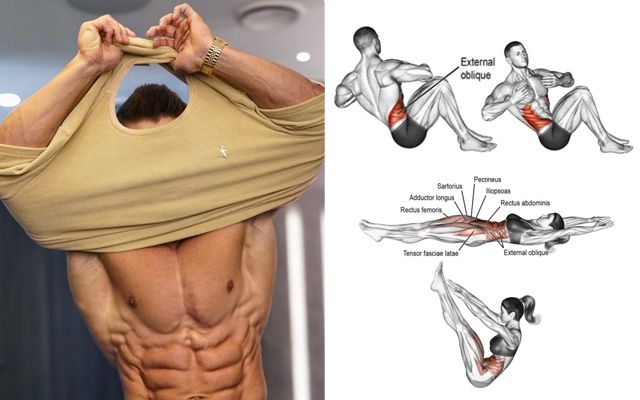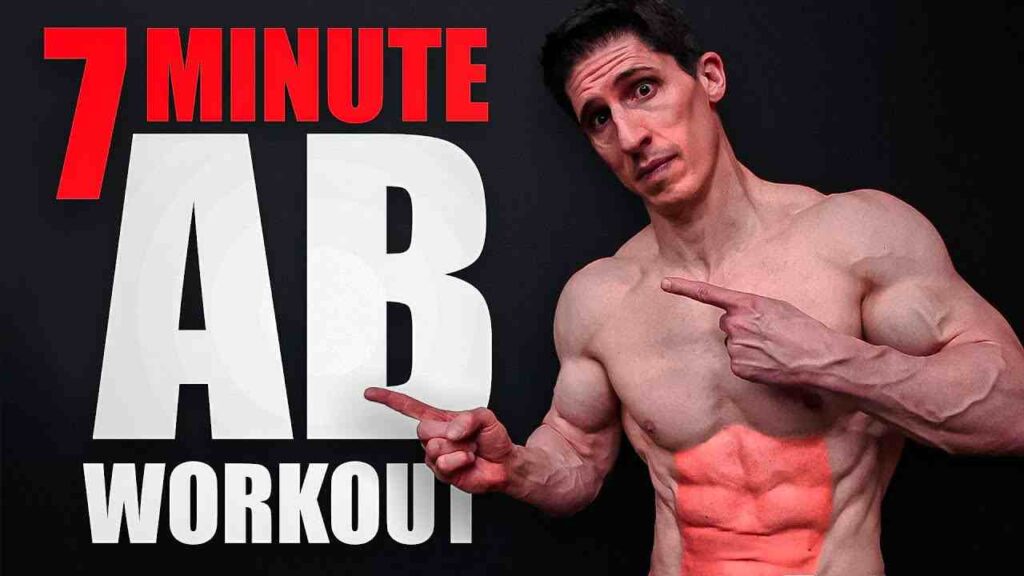Embarking on a journey towards physical fitness often leads us down a path filled with intriguing questions. One such question that has been a subject of much debate is, ‘Should I Stretch Before or After Abs Workout?’ It’s a query that has left many fitness enthusiasts scratching their heads. The importance of stretching in any workout routine is undeniable, but when it comes to abdominal workouts, the timing of stretching can make a significant difference. In this comprehensive guide, we will not only shed light on the benefits of abdominal workouts but also unravel the science behind the optimal timing of stretching. Whether you’re just starting your fitness journey or you’re an experienced athlete, this article promises to provide valuable insights that will help you maximize the effectiveness of your abs workout.
Introduction to Abdominal Workouts
Abdominal workouts, often simply referred to as ‘ab workouts’, are exercises specifically targeted to strengthen the muscles in your abdominal region. The abdominal region consists of several muscles, including the rectus abdominis (commonly known as the ‘abs’), the transverse abdominis, and the obliques.
Abdominal workouts are a crucial part of any fitness regimen for several reasons:
- Core Strength: Your abdominal muscles are a key component of your core, which includes your pelvis, lower back, hips, and abdomen. A strong core improves your overall fitness, makes it easier to perform most physical activities, and can improve your athletic performance.
- Posture and Back Health: Strong abs contribute to good posture by supporting your spine. They can also help prevent back pain by making you less prone to back injuries and by aiding in back pain relief.
- Balance and Stability: Your abs are essential for maintaining balance and stability, which is important in virtually every physical activity.
- Aesthetics: On a more superficial level, many people strive for a toned abdominal region for aesthetic reasons.
The Role of Stretching in Workouts
Stretching plays a pivotal role in any workout routine, including abdominal workouts. Here’s why:
Proper Form for Dumbbell Bench Press
- Improves Flexibility: Regular stretching can help increase your flexibility, which is crucial for your overall fitness. It can make it easier for you to perform everyday activities and exercise more effectively.
- Increases Range of Motion: Stretching can help you to move more freely, allowing your muscles to work more effectively.
- Prepares Your Body for Workout: Stretching before a workout allows your body to become more pliable, which reduces your risk for injury.
- Helps in Muscle Recovery: Post-workout stretches can aid in muscle recovery, reduce muscle soreness and ensure that your muscles and tendons are in good working order.
- Enhances Posture: Regular stretching can also help improve your posture, as it relieves aches and pains that can lead to slouching or poor posture.
- Promotes Blood Circulation: It helps to increase blood flow to the muscles, which can speed up recovery time and reduce muscle soreness.
- Reduces Tension and Stress: Stretching can help to reduce muscle tension and promote relaxation. It also aids in stress relief, as focusing on the act of stretching and its sensation can have a calming, mindful effect.
- Improves Athletic Performance: By increasing flexibility and range of motion, stretching can also improve athletic performance. It allows for greater movement around the joints, which can lead to improvements in other areas, such as increased strength.
- Promotes Better Muscle Coordination: Regular stretching can help ensure that your muscles work in harmony. This can result in smoother, more coordinated movements, which can be particularly beneficial in activities that require balance and precision.
- Enhances Enjoyment of Physical Activity: Stretching can make physical activities more enjoyable. It prepares your body for the activity ahead, so you can get the most out of your workout without discomfort or risk of injury.
SHOP FOR THE WORKOUT MAT ON AMAZON
Remember, it’s important to stretch both before and after your workout for maximum benefits.
When to Stretch Abs
The timing of when to stretch your abs during your workout routine can significantly impact the effectiveness of your workout and your muscle recovery. Here’s what you need to know:
- Before the Workout – Dynamic Stretching: Dynamic stretching is ideal before the workout. It involves moving parts of your body and gradually increasing reach, speed of movement, or both. This type of stretching improves dynamic flexibility and is quite useful as part of a warm-up for an active or aerobic workout. It prepares your body for the workout ahead and can help prevent injuries.
- After the Workout – Static Stretching: After your workout, static stretching can help cool down your body and allow your muscles to relax. It involves stretching a muscle to its furthest point and then maintaining that position. This type of stretching can help to lengthen your muscles, increase flexibility, and reduce muscle tension. It’s also beneficial in reducing muscle soreness post-workout.
SHOP FOR THE FOAM ROLLER ON AMAZON
Remember, everyone’s body is different, so it’s important to listen to your body and do what feels best for you. If you feel any pain while stretching, it’s a sign that you’re pushing too hard and you should ease up to prevent injury. Always consult with a fitness professional if you’re unsure about the correct stretching techniques.
Examples of Ab Stretches
Here are some examples of abdominal stretches that you can incorporate into your workout routine:
Cobra Stretch: This stretch targets your rectus abdominis, the muscle that runs along the front of your abdomen. To do this stretch, lie on your stomach with your legs straight and your palms on the floor near your shoulders. Press your hands into the floor and lift your chest and head, arching your back. Keep your hips and thighs on the floor. Hold this position for 15 to 30 seconds, then lower yourself back down. Repeat two to three times.
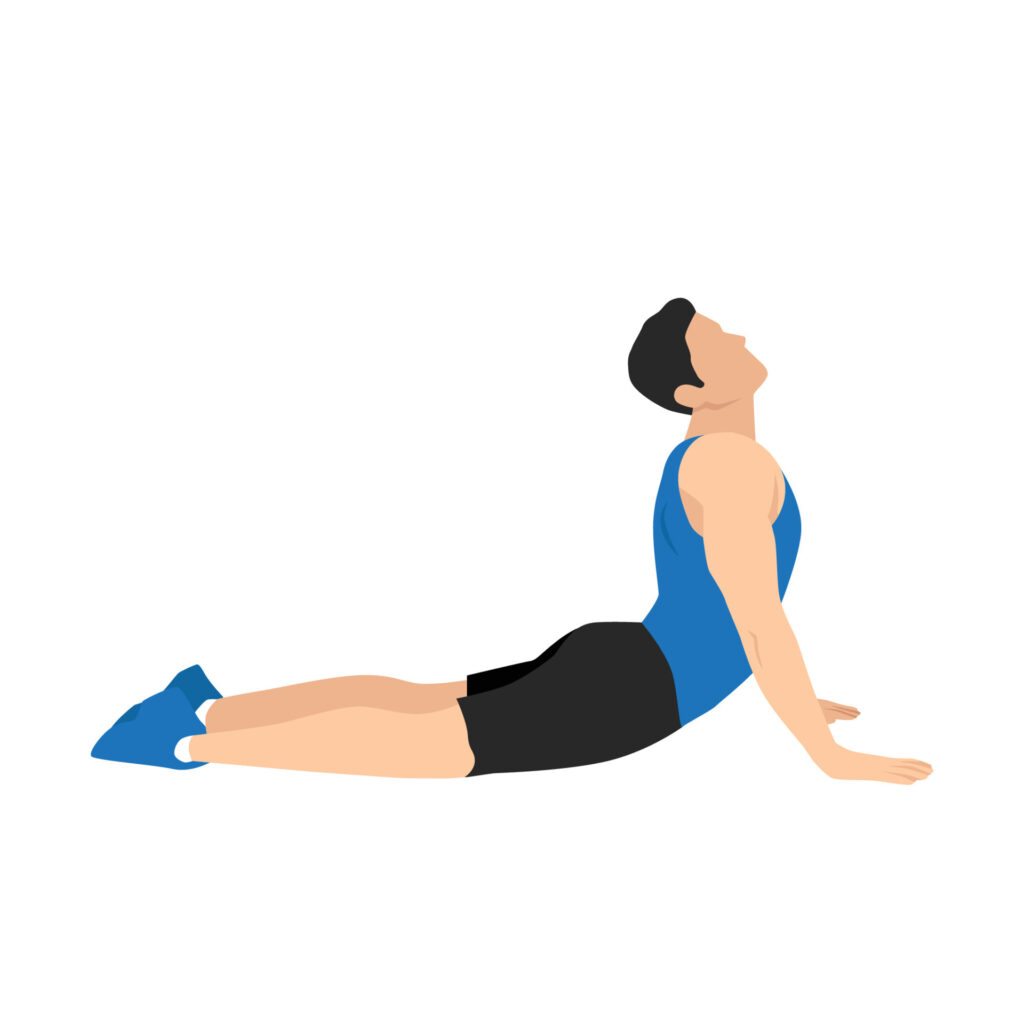
Cat-Cow Stretch: This stretch works on your rectus abdominis and your obliques, the muscles that run along the sides of your abdomen. To do this stretch, get on your hands and knees, with your wrists under your shoulders and your knees under your hips. Inhale and arch your back, dropping your belly and lifting your head and tailbone. This is the cow position. Exhale and round your back, tucking your chin and tailbone. This is the cat position. Alternate between these two positions for 10 to 15 repetitions.
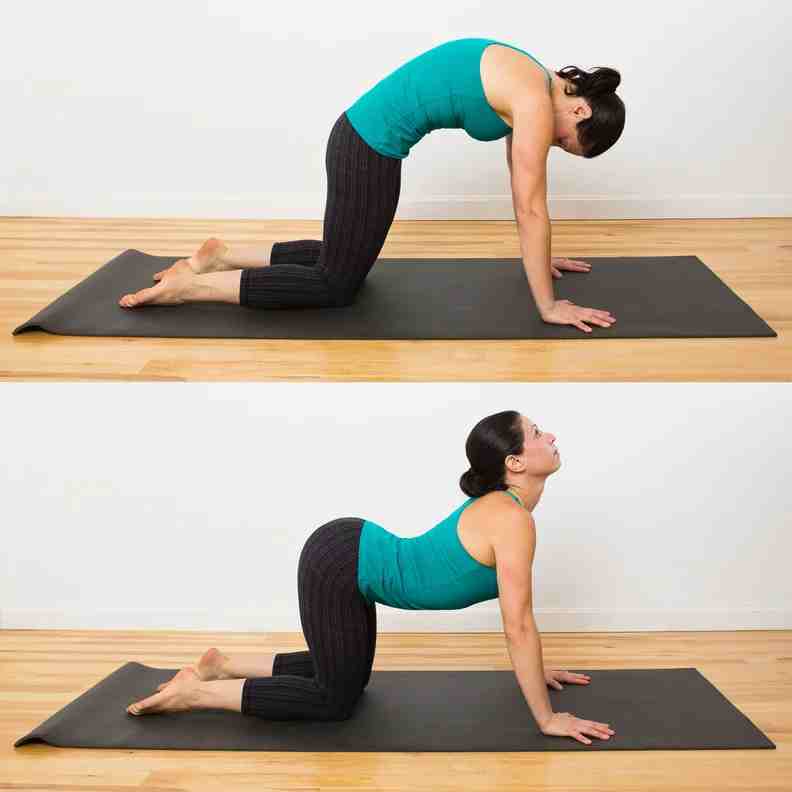
Prone Abdominal Stretch: This stretch also targets your rectus abdominis and your obliques. To do this stretch, lie on your stomach with your legs straight and your arms extended overhead. Lift your arms and legs off the floor, keeping them straight. Hold this position for 10 to 15 seconds, then lower them back down. Repeat two to three times.
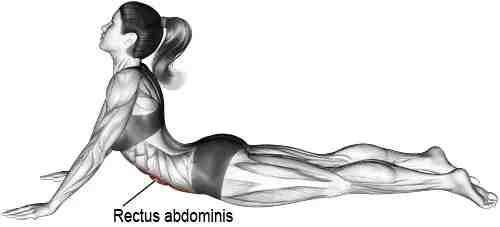
Lying Rotation Stretch: This stretch stretches your obliques and your lower back muscles. To do this stretch, lie on your back with your knees bent and your feet flat on the floor. Extend your arms out to the sides, palms facing down. Keeping your shoulders on the floor, drop your knees to one side, twisting your lower body. Hold this position for 15 to 30 seconds, then switch sides. Repeat two to three times on each side.
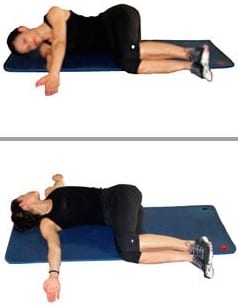
Seated Lower Trunk Lateral Flexion Stretch: This stretch stretches your obliques and your intercostal muscles, the muscles between your ribs. To do this stretch, sit on a chair with your feet flat on the floor and your back straight. Place your right hand on the right side of your head and gently pull your head to the right, bending your neck. At the same time, reach your left arm down to the left side of your body, bending your torso. Hold this position for 15 to 30 seconds, then switch sides. Repeat two to three times on each side.
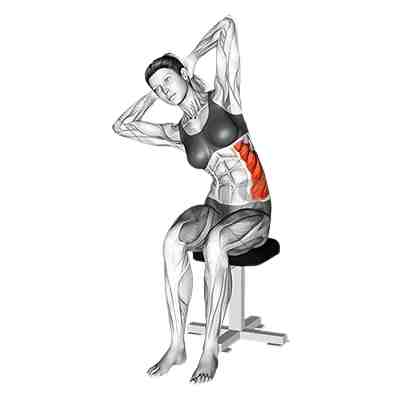
Hip Extension Supported Backward Ab Stretch: This stretch stretches your rectus abdominis and your hip flexors, the muscles that connect your hips and your thighs. To do this stretch, stand with your feet shoulder-width apart and your hands on your hips. Step your right foot back and bend your left knee, lowering your body into a lunge. Lean your upper body back and look up, arching your back. Hold this position for 15 to 30 seconds, then switch legs. Repeat two to three times on each leg.
SHOP FOR THE RESISTANCE BAND ON AMAZON
Standing Oblique Twist: This stretch stretches your obliques and your lower back muscles. To do this stretch, stand with your feet shoulder-width apart and your arms extended out to the sides, palms facing down. Twist your upper body to the right, keeping your hips and legs still. Hold this position for 15 to 30 seconds, then twist to the left. Repeat two to three times on each side.
Remember, it’s important to perform these stretches correctly to avoid injury. If you’re unsure about how to perform these stretches, it may be helpful to consult with a fitness professional.
Safety Measures
When it comes to stretching and abdominal workouts, safety should always be your top priority. Here are some safety measures to keep in mind:
- Warm-Up: Always start your workout with a warm-up to prepare your body for exercise and reduce the risk of injury.
- Proper Form: Ensure you’re performing each stretch and exercise with the correct form. Incorrect form can lead to injuries and less effective workouts.
- Listen to Your Body: If you feel pain during a stretch or exercise, stop immediately. Pain is your body’s way of telling you something is wrong.
- Don’t Rush: Don’t rush through your stretches or exercises. Take your time to ensure each movement is performed correctly and safely.
- Stay Hydrated: Drink plenty of water before, during, and after your workout to keep your body hydrated.
- Consult a Professional: If you’re new to working out or have any health concerns, consult with a fitness professional before starting a new workout routine.
- Rest and Recovery: Allow your body time to rest and recover after workouts. Overworking your muscles can lead to injuries.
Remember, the goal of working out is to improve your health and fitness, so always prioritize safety over intensity or the number of repetitions.
Frequency of Stretching Abs
The frequency of stretching your abs can depend on several factors, including your overall fitness level, specific fitness goals, and any advice given by a healthcare or fitness professional. However, here are some general guidelines:
- Daily Stretching: It’s generally safe to stretch your abs every day. In fact, daily stretching can help to improve flexibility and reduce muscle tension.
- Stretching Before and After Workouts: It’s recommended to stretch before and after your ab workouts. Before your workout, do dynamic stretches to prepare your body for exercise. After your workout, do static stretches to help cool down your body and improve flexibility.
- Duration of Stretching: Each stretch should be held for about 15 to 30 seconds for adults. For most people, repeating each stretch three to five times is effective.
- Consistency is Key: The most important thing is to be consistent with your stretching routine. Regular, consistent stretching can help to improve muscle flexibility, reduce tension, and prevent injuries.
Building Wider Shoulders with Rear Delt Exercises
Remember, these are general guidelines and it’s important to listen to your body. If you feel any pain while stretching, stop and consult a healthcare or fitness professional.
Should I Stretch Before or After Abs Workout?
Before your workout, it’s beneficial to do dynamic stretching. This form of stretching involves active movements that help to warm up your muscles, increase your range of motion, and prepare your body for the workout ahead. Dynamic stretches for your abs might include torso twists or standing side bends.
After your workout, static stretching is recommended. This involves holding a stretch for a certain period (usually around 15-30 seconds), which helps to cool down your body, improve flexibility, and promote muscle recovery. Static stretches for your abs could include the cobra stretch or the seated side straddle stretch.
So, in summary, it’s beneficial to do both: dynamic stretching before your abs workout to warm up, and static stretching after your workout to cool down and promote muscle recovery. As always, it’s important to listen to your body and adjust your routine as needed. If you’re ever unsure, it’s a good idea to consult with a fitness professional.
FAQs
Q 1. How long should I hold a stretch for my abs?
Ans. It’s generally recommended to hold a static stretch for about 15 to 30 seconds.
Q 2. Are there any specific stretches for lower abs?
Ans. Yes, some stretches specifically target the lower abs, such as the lying leg raise stretch and the seated straddle stretch.
Q 3. What are the signs of overstretching?
Ans. Signs of overstretching include sharp or stabbing pain, discomfort that lasts for more than a day, and decreased mobility in the stretched area.
Q 4. How can I tell if I’m doing an ab workout correctly?
Ans. Signs of a correctly performed ab workout include feeling a burn in your abs (not your neck or back), being able to maintain proper form throughout the workout, and not feeling any sharp or sudden pain.
Q 5. How can I prevent lower back pain when doing ab workouts?
Ans. To prevent lower back pain, ensure you’re using the correct form, don’t forget to work your back muscles as well, and always warm up before your workout and cool down afterwards.
Q 6. What is the difference between dynamic and ballistic stretching?
Ans. Dynamic stretching involves controlled, smooth, and deliberate movements, while ballistic stretching involves bouncing movements where a body part is forcibly moved into a stretched position.
Q 7. What are some tips for maintaining motivation in a regular workout routine?
Ans. Some tips include setting realistic goals, making your workouts enjoyable, tracking your progress, and mixing up your routine to keep it interesting.
Conclusion
In conclusion, the debate of ‘Should I Stretch Before or After Abs Workout?’ requires understanding the different types of stretching and their benefits. Dynamic stretching before your workout can prepare your body for the exercise, while static stretching after your workout can aid in recovery and flexibility.
Incorporating both into your routine can enhance your abdominal workouts and contribute to overall fitness. Remember, everyone’s body is different, so it’s important to listen to your body and do what feels best for you. As always, consult with a fitness professional if you’re unsure about any aspect of your workout routine.

Good day, and welcome to Fitthour. My name is Shubham Vijay, and I am a certified personal trainer and nutrition coach with 6 years of experience in the fitness industry. At Fitthour, we specialize in types of training, such as strength training, cardio, or HIIT, and our mission is to help clients achieve their fitness goals and improve their overall health.

